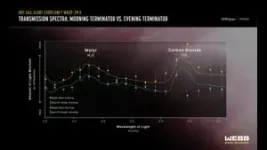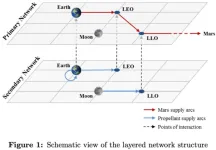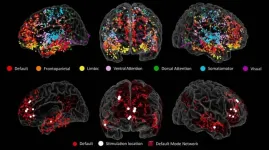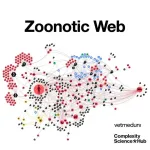By Benjamin Boettner
With the award for up to $27 million from the Advanced Research Projects Agency for Health (ARPA-H), a collaborative research project at the Wyss Institute for Biologically Inspired Engineering at Harvard University will advance a disease-agnostic novel RNA therapeutic with the potential to treat diverse diseases, and to be effectively and rapidly deployable. By safely and naturally stimulating the “innate immune” system — the body’s first line of defense against disease-causing tumor cells and pathogens — this approach has the potential to stimulate the immune system as a whole, including its more cancer cell and pathogen-specific “adaptive immune” responses. Its therapeutic effects in the body can significantly outlast the presence of the RNA drug itself, and potently synergize with other immunotherapies in patients suffering from various types of cancer and infectious diseases.
“We are excited by the opportunity afforded by the ARPA-H award to develop new RNA-based therapeutics, advanced delivery vehicles, and manufacturing capabilities to provide patients with cancer and infectious diseases with new treatment opportunities. We have assembled an exceptional team that is eager to realize the potential of our proposed program,” said Wyss Core Faculty member Natalie Artzi, Ph.D., who is the lead-investigator on the project with co-principal investigator and Wyss founding director, Don Ingber, M.D., Ph.D. Artzi also is Associate Professor of Medicine at Harvard Medical School (HMS) and Brigham and Women’s Hospital and a Principal Research Scientist at MIT.
ARPA-H is a federal funding agency established by the Biden Administration, which funds transformative biomedical and health research breakthroughs, rapidly translating research from the lab to applications in the marketplace. The ARPA-H award will allow the Wyss team to significantly accelerate and expand their efforts in order to advance the therapy towards an Investigational New Drug (IND) submission to the Federal Food and Drug Administration (FDA).
With its first focus on cancer as a disease target, the multidisciplinary Wyss team combines critical and highly complementary expertise in the areas of drug discovery, advanced in vitro and in vivo models for preclinical drug testing, innovative drug delivery, RNA nanotechnology, and next-generation RNA synthesis and manufacturing. After having significantly de-risked their disease-agnostic immunotherapeutic RNA therapy as a cancer treatment, the team will also validate its use for difficult-to-treat infectious diseases.
The ARPA-H project builds on a Duplex RNA technology pioneered by Ingber's team and leverages innovative drug delivery approaches that Artzi’s group developed with a particular focus on programming the immune system, as well as an expansive array of human “Organ Chip” tissue culture systems advanced by Ingber’s group that enable preclinical human drug testing. Artzi and Ingber are joined on the project by additional key investigators, including Wyss Director of Translational R&D Kenneth Carlson, Ph.D., a drug discovery and development specialist with extensive industry experience, who drove the development of the Duplex RNA, and Wyss Core Faculty member William Shih, Ph.D., who has developed DoriVac, a DNA origami platform that allows the precise and highly effective presentation of RNA drugs, cancer and pathogen-derived antigens, and immune activating adjuvants to the immune system. Shih and his team will provide their DNA nanotechnology approach as an additional drug delivery component to the project. Finally, the researchers will collaborate with Wyss start-up EnPlusOne Biosciences to harness the RNA solution company’s novel enzymatic RNA synthesis and manufacturing capabilities that overcome key limitations of commonly used chemical RNA synthesis methods.
“The Wyss Institute’s ambition and ability to take on extraordinarily difficult challenges, and to mature promising early research discoveries all the way to real-world solutions that are prime for clinical stages, resonates well with ARPA-H’s mission. We are excited and confident that our accomplished, highly multidisciplinary team will have a significant impact on future immune therapies and patients’ lives with ARPA-H's tremendous support,” said Ingber, who isalso the Judah Folkman Professor of Vascular Biology at Harvard Medical School and Boston Children’s Hospital, and the Hansjörg Wyss Professor of Biologically Inspired Engineering at the Harvard John A. Paulson School of Engineering and Applied Sciences.
Origins and validation
The project began in the middle of the COVID-19 pandemic, when Ingber’s group identified a novel, structurally distinct double stranded RNA molecule (Duplex RNA) that they showed prevents the replication of various potential pandemic respiratory viruses, including SARS-CoV-2 in an animal model as well as MERS-CoV, and various influenza viruses in human lung tissues engineered in Organ Chips. It did so by stimulating an innate immune response involving a family of protective cytokines known as interferons (IFNs) without triggering potentially dangerous inflammation that occurs when the innate immune system is overactivated. As the molecular target for the Duplex RNA, the researchers identified the RIG-I protein, which normally responds to viral RNA molecules by inducing tissue-protective immune responses through the balanced activation of several gene-activating IFN pathways.
IFN protein therapeutics have made their way into the clinic for the treatment of infectious diseases as well as certain cancers, and they also have been used to sensitize cancer cells to other forms of therapy, including chemo- and radiation therapy, as well as newer immunotherapies. However, “past therapeutic approaches, which administered a single concentrated dose of an individual manufactured IFN protein via injection, have often been unbalanced, as they strongly and selectively activate only one of many downstream pathways, and they had highly variable effects across patients and cancer types,” said Carlson. “Our Duplex RNA approach induces the body’s own innate immune response, resulting in a more balanced, highly beneficial activation of multiple types of protective IFNs with a significantly larger therapeutic window that we aim to broadly harness in this project.”
The Duplex RNA project was named a Wyss Validation Project in 2022, during which time the Wyss team further de-risked their novel approach as an infectious disease therapeutic by showing potent efficacy in a mouse model of COVID-19. Then, in a second Wyss Validation Project awarded in 2023 and coordinated by Ingber and Carlson, which also includes Artzi and Shih as investigators, they successfully pursued it as a potential cancer therapeutic. In the new ARPA-H project, they will leverage the powerful RNA delivery capabilities of Artzi’s and Shih’s groups along with the groundbreaking enzymatic RNA synthesis capabilities of EnPlusOne to optimize the Duplex RNA’s stability and efficacy. They also will utilize human Organ Chip culture technology and preclinical animal models as highly relevant test beds. Importantly, findings obtained in human Organ Chip models, according of the 2022 FDA Modernization Act, can now be included in an IND submission to the FDA.
Delivery is key
Key for the project’s success will be the team’s ability to deliver an optimized Duplex RNA to the body’s tumor-bearing or infected tissues. Artzi has pioneered multiple drug delivery systems that can be used to target therapies to specific sites and cells in the body, or effectively distribute them broadly. For example, her group’s polymeric nanoparticles can increase the stability and loading of drugs, as well as drug uptake by cells, when compared to other delivery methods, and release their cargo in response to specific cellular cues. This enabled her team to create an immunotherapy that accumulates in immune and cancer cells, with the latter functioning as a depot – releasing the nanoparticles to innate immune cells in their vicinity, and activating them to generate a long-lasting anti-tumor immune response.
While these nanoparticles are administered intravenously, another material-based delivery strategy developed in Artzi’s group consists of polymeric microneedles that, applied as a patch, can be used to deliver drugs into subcutaneous layers of the skin. The team used these microneedle patches to administer a melanoma therapy in a mouse model, and to monitor local immune responses based on skin biomarkers collected by the patch. The utility of microneedles, including their safe and painless administration, also makes them an important future avenue to treat many more patients in clinically underdeveloped settings, allowing them to benefit from otherwise inaccessible therapies.
“We will pursue both delivery routes for the disease-agnostic Duplex RNA therapy and, together with William Shih’s group, also explore their integration with DNA origami technology, which can function as a precision instrument to fine-tune and enhance the presentation of the Duplex RNA to RIG-I sensor proteins within cells,” said Artzi. “Our ultimate goal is a disease-agnostic innate immune therapeutic platform that effectively synergizes with other immunotherapies, enabling a much larger proportion of patients to be treated with them across a much larger range of cancer and infectious diseases.”
PRESS CONTACTS
Wyss Institute for Biologically Inspired Engineering at Harvard University
Benjamin Boettner, benjamin.boettner@wyss.harvard.edu
Conway Communications for EnPlusOne Biosciences
Mary T. Conway, mtconway@conwaycommsir.com
###
The Wyss Institute for Biologically Inspired Engineering at Harvard University (www.wyss.harvard.edu) is a research and development engine for disruptive innovation powered by biologically-inspired engineering with visionary people at its heart. Our mission is to transform healthcare and the environment by developing ground-breaking technologies that emulate the way Nature builds and accelerate their translation into commercial products through formation of startups and corporate partnerships to bring about positive near-term impact in the world. We accomplish this by breaking down the traditional silos of academia and barriers with industry, enabling our world-leading faculty to collaborate creatively across our focus areas of diagnostics, therapeutics, medtech, and sustainability. Our consortium partners encompass the leading academic institutions and hospitals in the Boston area and throughout the world, including Harvard’s Schools of Medicine, Engineering, Arts & Sciences and Design, Beth Israel Deaconess Medical Center, Brigham and Women’s Hospital, Boston Children’s Hospital, Dana–Farber Cancer Institute, Massachusetts General Hospital, the University of Massachusetts Medical School, Spaulding Rehabilitation Hospital, Boston University, Tufts University, Charité – Universitätsmedizin Berlin, University of Zürich, and Massachusetts Institute of Technology.
EnPlusOne BioSciences (www.enplusonebio.com) is enabling the future of RNA therapeutics. Its ezRNA™ platform is a revolutionary innovation that harnesses the power of enzymes to synthesize RNA and can incorporate a diverse array of natural and modified nucleotides. Their enzymatic, water-based approach promises to unlock sustainable and scalable commercial manufacturing of RNA therapeutics.
END






